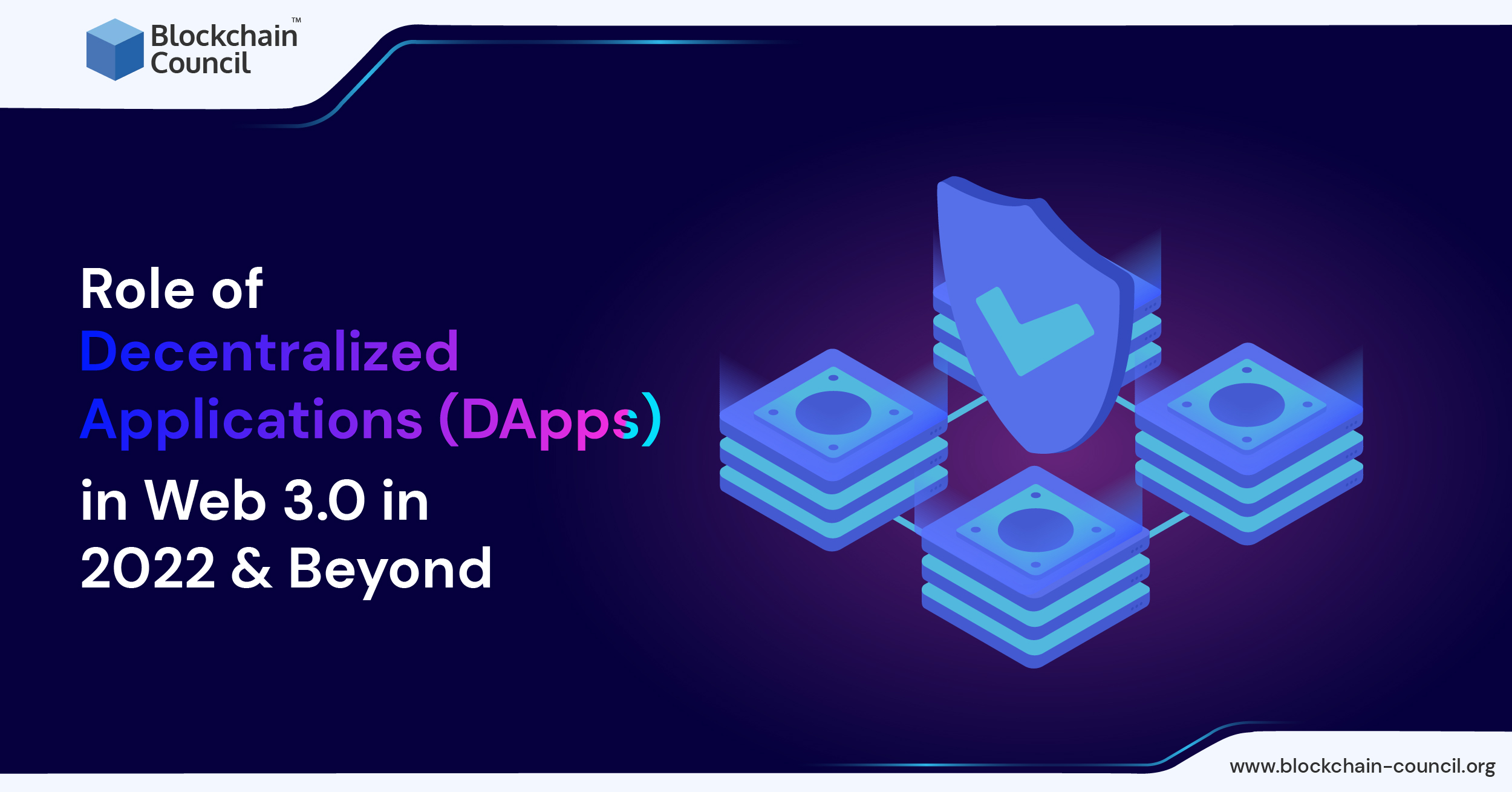
- Blockchain Council
- September 23, 2022
When we talk about the decentralized web, the first thing that comes to mind is Decentralized Applications that empower the core infrastructure of Web 3.0. With the expansion of cryptocurrencies and blockchain technology, the urge to build the Web3 cluster is increasing in full swing. Industry experts are designing innovative DApps that can help to expand the capacities of the decentralized web and make it more independent, secure, and transparent. In this article, we will talk about DApps and explain the role of DApps in Web3 evolution. Let’s take a look:
Everything about Web 3.0 DApp and DApp Architecture
Decentralized Applications are digital protocols or programs that thrive on a blockchain or P2P network of computers. These apps adopt the decentralized infrastructure to remain free from the restraints of a single regulatory authority. Presently, DApps are generally designed on the Ethereum portal that uses smart contract technology. DApps are encouraging web3 development and are revolutionizing the scope of industrial realms, including finance, gaming, social media, etc.
The architecture of decentralized apps is different from what we see in web2 applications. The web3 DApp infrastructure is complicated to understand as it involves new methodologies. When we talk about the core infrastructure or layers of web3 DApps, we include the following:
-
Front end
Also known as the user side, the front end is that part of the DApp with which the customer connects directly. The front-end depicts the UI logic and helps to communicate with smart contracts that eventually decide the application logic. It contains a digital wallet that stores private and public keys. The front-end code executes on the user’s browser and interacts with the DLT to control the keys and the wallet address. The code is written using popular programming languages like JavaScript, CSS, and HTML. Web3 training programs enhance the skills of participants in the aforesaid programming languages.
-
Web3.js
Web3.js works as a JavaScript library that allows users to connect the front end with the Ethereum blockchain. One needs to connect to a network node to link with the blockchain. For this, you can run the node on your computer or interact with an external party running the node.
-
Smart Contracts
Smart contracts are codes or applications written to interact with the Ethereum ecosystem. These contracts contain pre-determined conditions that the parties entering the contract must fulfill. The contract comes into force only when the conditions defined in the smart contract are satisfied. Launched in 2015 on ETH, smart contracts foster complicated computations in a trustless mode, ensuring fulfillment of terms by both parties. Today, the market is flooded with hundreds of DApps across various fields such as gaming, retail, DeFi, etc.
An expert web3 developer writes these contracts in high-level programming languages like Solidity. You can easily link smart contracts to APIs via oracles to extract off-chain data while being on-chain on the ETH cluster.
-
Ethereum Virtual Machines (EVM)
Ethereum Virtual Machines decode the logic given in the smart contracts. They process the changes happening on the blockchain network. The EVM cannot read Solidity language, so users need to translate the code into bytecode to ensure proper execution of the contract.
How DApps empower Web3 Users?
-
DApps Facilitate Data Control
Web3 DApps use blockchain technology as a resource to ensure data independence. The decentralized cluster removes interference from central authorities in data verification, making the users the ultimate owners of their content. Also, by giving users the power to vote and give suggestions, DApps are changing the governance and community participation paradigms. By casting votes, users get a fair chance to contribute to the decision-making process and project implementation. The developers choose the proposal that gets maximum votes from the community to work upon.
DApps foster a sense of community among users and developers, unlocking a new owner-user relationship that was impossible in the centralized Web 2.0 portals. Tokenization of assets allows users to own their DApp projects. The voting power of users on a Dapp platform is proportional to the number of crypto tokens they own. These apps frequently grant token holders exclusive rewards, privileges, and loyalty perks alongside their voting rights.
-
DApps offer Higher Scalability
Compared to centralized networks, Web3 DApps offer high levels of scalability in processing user transactions. Various well-known blockchain ecosystems supporting Dapps can easily support tens of thousands of transactions per second. Where Bitcoin uses Proof-of-Work consensus, modern blockchains are switching to Proof of Stake consensus methods to expand scalability. PoW heavily depends on mining which is an energy-intensive process and also has a low Transaction Per Second rate.
On the other hand, PoS consensus uses staking as a resource and offers higher TPS capacity. This makes PoS chains a strong substitute for traditional payment systems. For instance, the Polygon side chain has a capacity of 65,000 TPS. These networks are much more scalable than centralized platforms, ensuring transaction processing in a few seconds. Dapps are employing precisely this technology to make Web 3.0 platforms instantaneously accessible to users worldwide. In web3 course programs, users get a fair opportunity to learn about the various aspects of the web3 ecosystem.
-
Dapps support Flexibility
Dapps strive to offer improved flexibility compared to Web 2.0 centralized portals. Web 2.0 forces users to comply with tiring registration processes involving KYC norms. Users of these protocols must submit their personal data, including name, address, email, passport details, or ID cards. Though KYC norms ensure data security on the customer’s part, firms are still found guilty of using the collected data from users and trading it with third parties.
Web 3.0 removes such requirements by restraining users from giving up their privacy and personal information to platforms. DApps use blockchain technology, digital wallets, and cryptocurrencies to support privacy. These apps store user information on DLT to be free from intrusions and modifications. Blockchain supports immutability, so the data stored cannot be traded to other parties. Also, cryptocurrencies allow users to maintain anonymity when trading.
-
Interconnectivity through DApps
Web3 developers are focusing on interconnectivity when creating DApps. As our working paradigms are shifting toward a fast-paced economy, it is not profitable to create apps that cater to a single requirement of the users. In the Web 3.0 era, customers expect to be able to conduct a variety of services through their Dapps without having to actively switch between platforms or spend time in account registration processes. DApps support interconnectivity between portals so that users can enjoy access to a wide range of services seamlessly.
-
DApps support Ease of Work
Users can access their data anywhere and anytime via the decentralized data storage of DApps. Multiple backups help ensure data safety and recovery during a server failure. Furthermore, no individual, group, or regulatory authority has the power to control the DLT network. This reduced the risk of account suspension and global service denial on a decentralized application cluster.
-
Easy Data Accessibility via DApps
Any place or device can access the information stored on the blockchain network. The aim of enabling smartphones and other devices to access data when they are synchronized is to enhance data accessibility. Web 3.0 will increase the breadth of DApp accessibility even further with features like safe data transfers, improved information flows, and trustless payments. The decentralized ecosystem encourages participation from people worldwide.
Popular Use Cases of Web 3.0 DApps
-
DApps in DeFi
Decentralized finance or DeFi DApps are changing the way we perceive finance. They are emerging as a robust substitute for traditional financial services. DeFi Dapps are becoming popular because of their in-built characteristics like immutability, transparency, and trustless trading. The use of blockchain and smart contracts make them a perfect choice for investors. DeFi dApps offer new products and decentralized tools that greatly benefit users, banks, and financial service providers like lenders, borrowers, traders, etc.
DApps have the ability to lower the barriers to entry into the financial domain for people across the world. They unlock a system that ensures complete transparency and offers 24/7, cost-friendly services to users. People can indulge in Decentralized Finance without paying a single penny to intermediaries. The effects of smart-contract-powered dApps on the financial industry are already apparent, despite the DeFi sector’s relative novelty. The number of creative dApps that are currently offering users value and utility clearly indicates its promising future.
-
DApps Aid DAO Creation
DApps play a crucial role in constructing the infrastructure of a Decentralised Autonomous Organisation (DAO). DAOs are community-focused organizations that use smart contracts to ensure transparent decision-making. They allow businesses to grow as a decentralized entity that supports the inclusion of ownership for the members. DAOs can facilitate complex, automatic incentive models within a corporate ecosystem by injecting smart contracts into the core working infrastructures. DAOs help to reduce administrative costs spent on office rent, HR staff, and payroll management tools by shifting these processes to a smart contract-based model.
-
DApps in E-Gaming
Non-fungible tokens, or NFTs, are an inevitable part of the modern gaming industry that rests on blockchain technology and cryptocurrencies. These distinctive digital assets work as the in-game collectibles that manage the economy of the e-game. Smart contract-empowered DApps are crucial to NFTs. The blockchain networks that support NFTs allow players to enjoy ownership, interoperability, and immutability. NFTs are non-fungible, meaning they are one-of-a-kind, uncommon, and indivisible. Using NFTs and DApps could promote widespread blockchain adoption and a more equal value model in gaming.
You may keep in-game purchases, sell them to other players, or transfer them to other supported games by using NFTs. In the meantime, the unchangeable records included in an NFT’s underlying blockchain network and its ownership history prove the rarity of in-game contents. Blockchain-based games and dApps have the ability to grow gaming ecosystems, generate new gaming products, and encourage innovations. NFTs are distinctive and can be created to retain value outside the game they are a part of.
Conclusion
The role of DApps in Web3 expansion is undeniably important as the former helps to establish decentralization in the Web 3.0 ecosystem. The use of smart contract technology has the potential to expand the working capacities of the industrial realms. This is why industry experts are trying their best to design DApps that empower the decentralized cluster, unlocking opportunities for growth for the users. The DApp sector is growing slowly with active participation from developers designing interoperable, accessible, and secure products. The future for DApps looks promising, so we can soon see them joining the mainstream industry.
If you are planning to learn about blockchain, crypto, and Web3, then you can visit Blockchain Council’s official website. The portal offers Web3 certification courses for beginners and experts. The web3 education offered on the platform helps to get a grip on subjective concepts and practical aspects of the field.

































































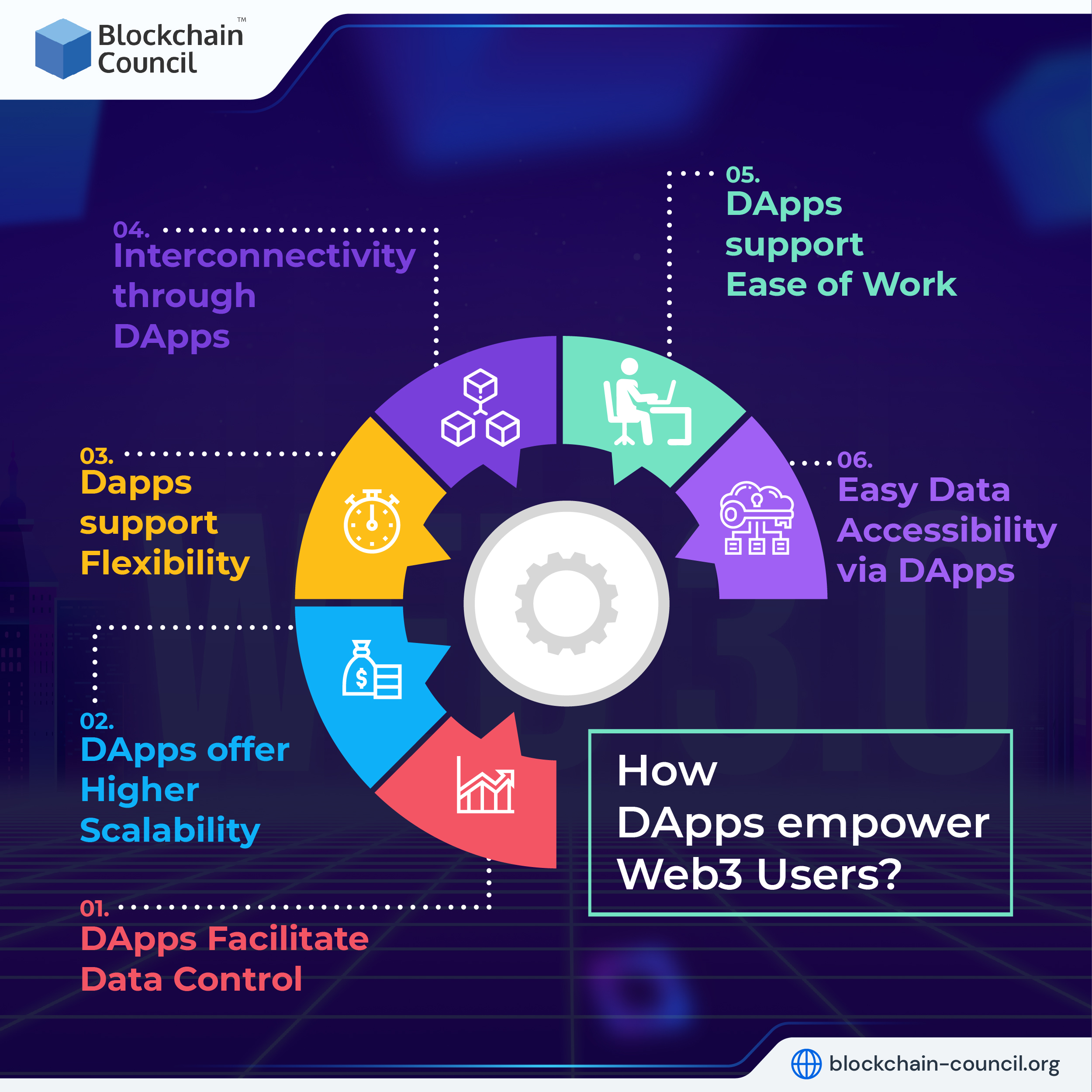
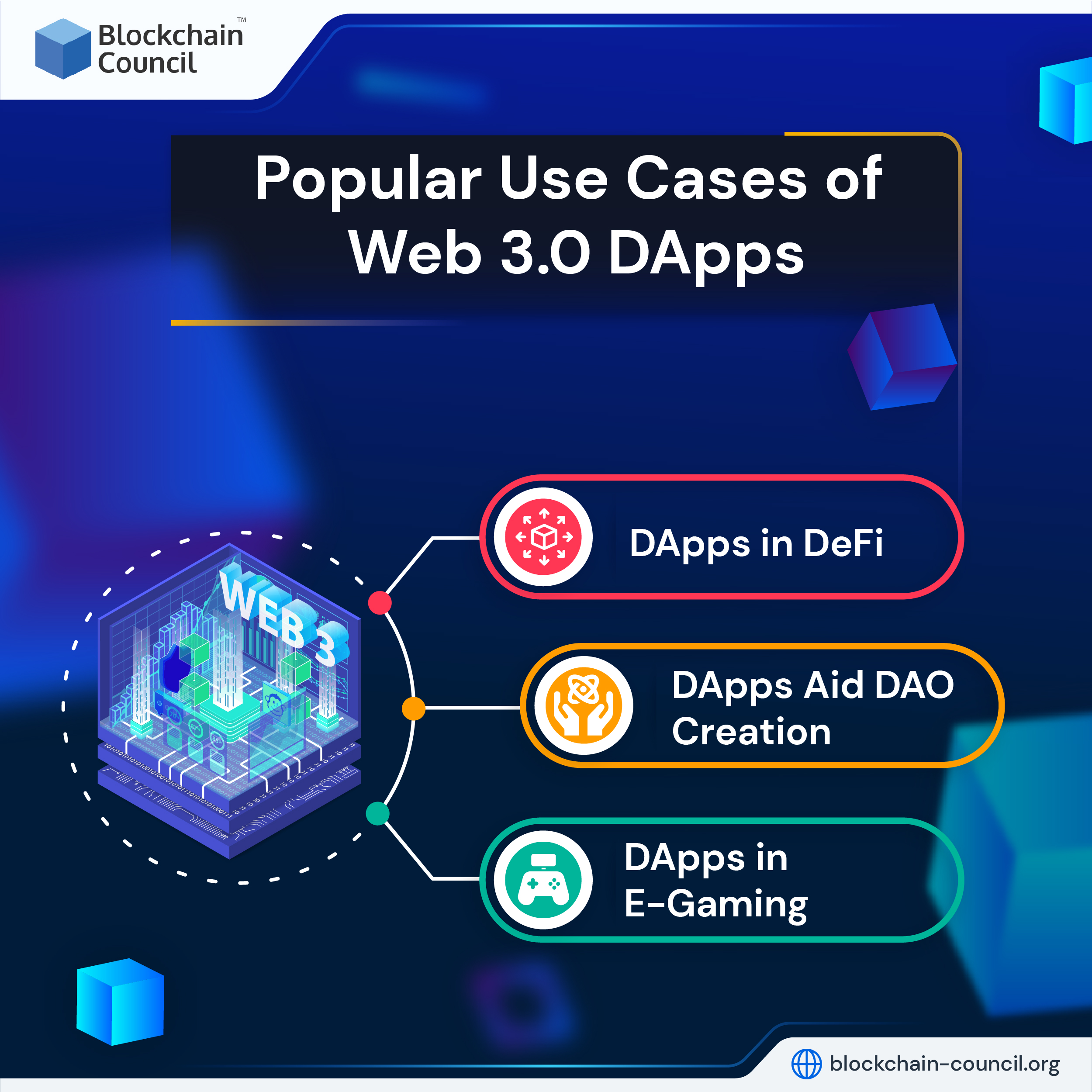
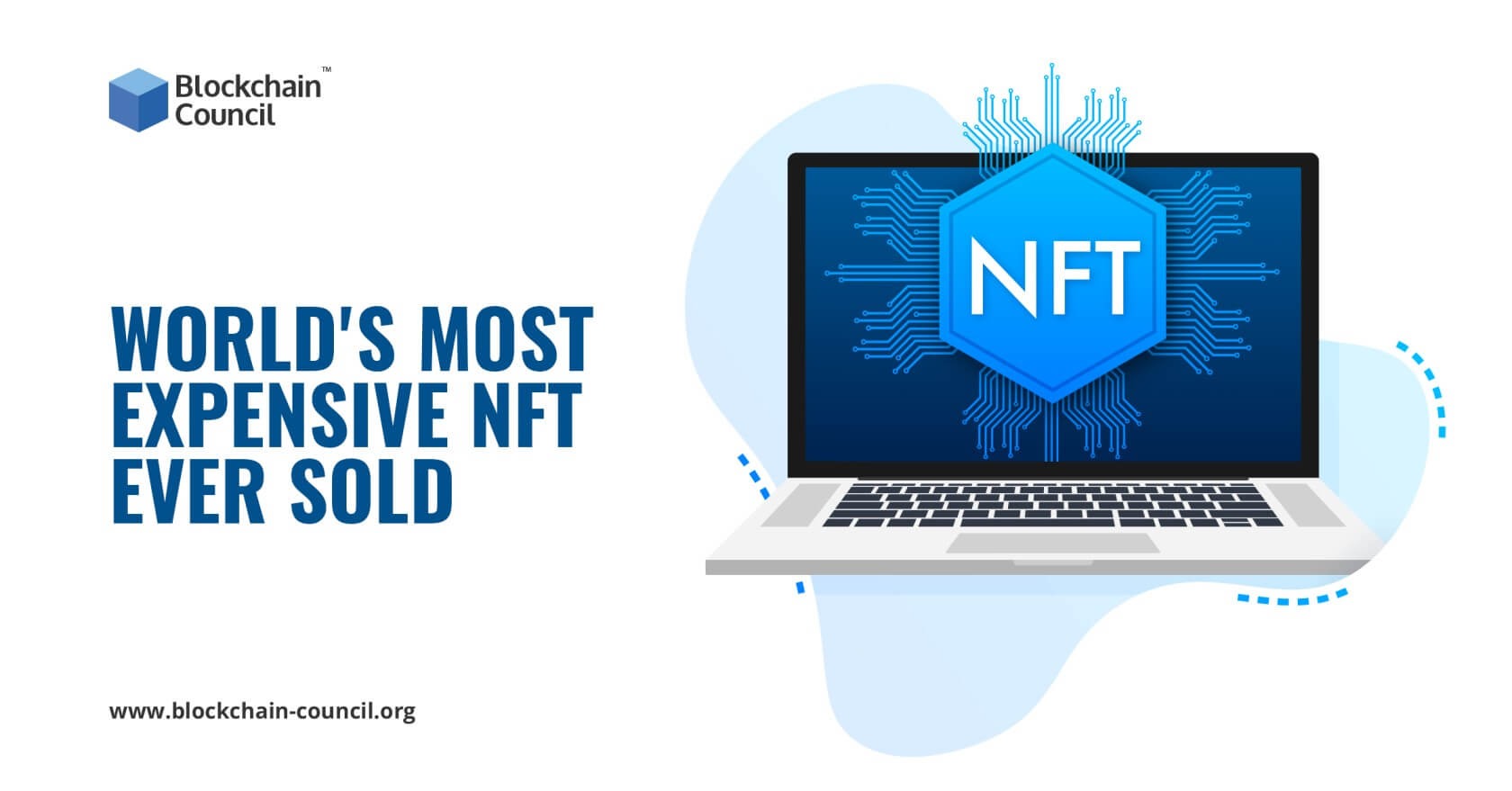
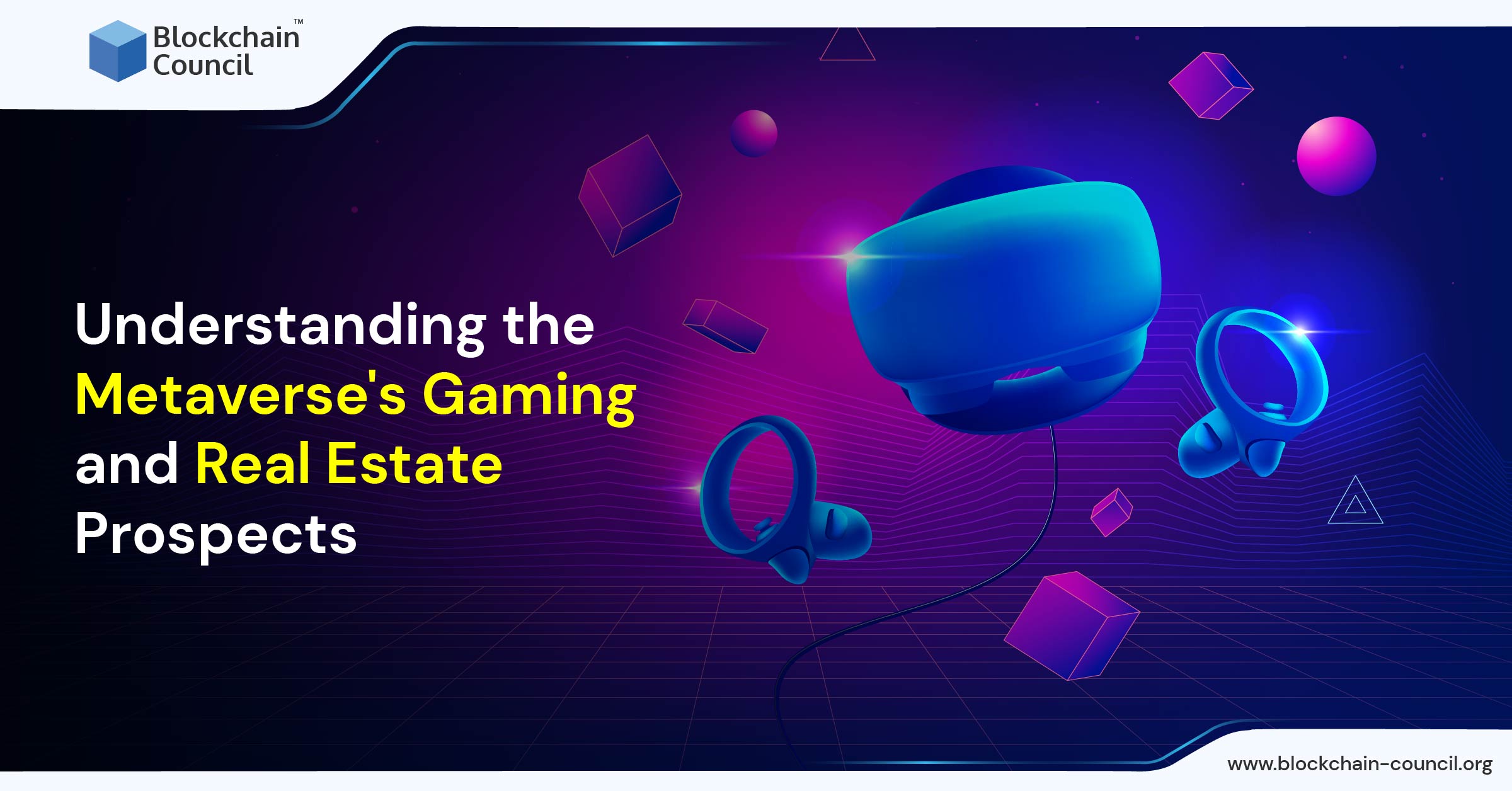
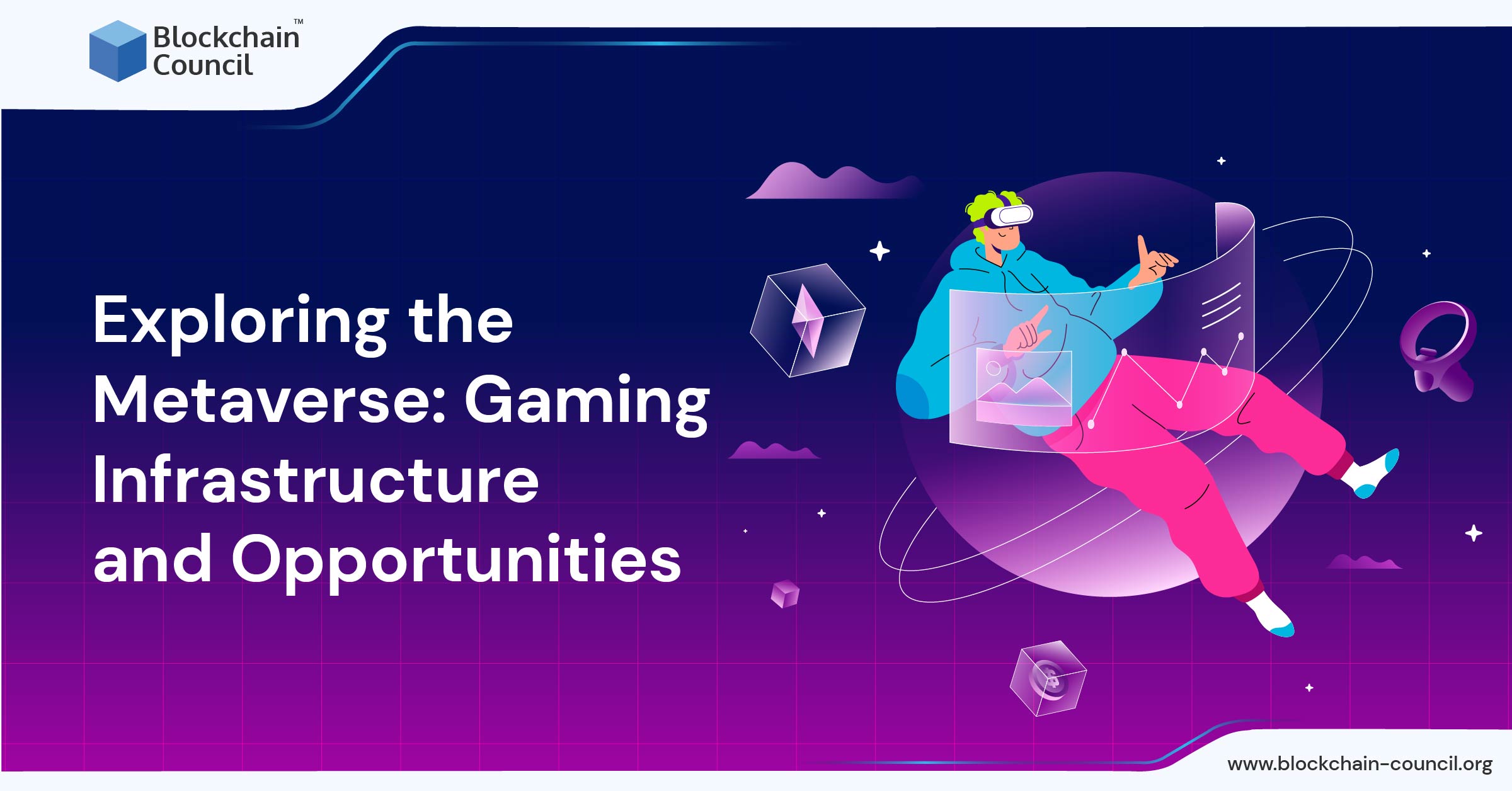

 Guides
Guides News
News Blockchain
Blockchain Cryptocurrency
& Digital Assets
Cryptocurrency
& Digital Assets Web3
Web3 Metaverse & NFTs
Metaverse & NFTs
